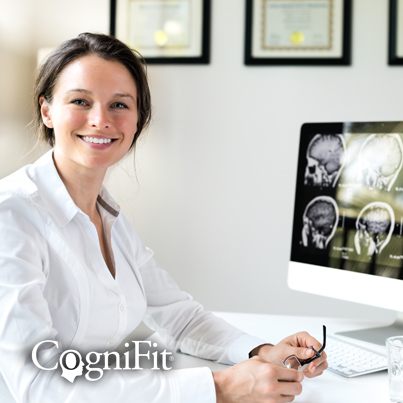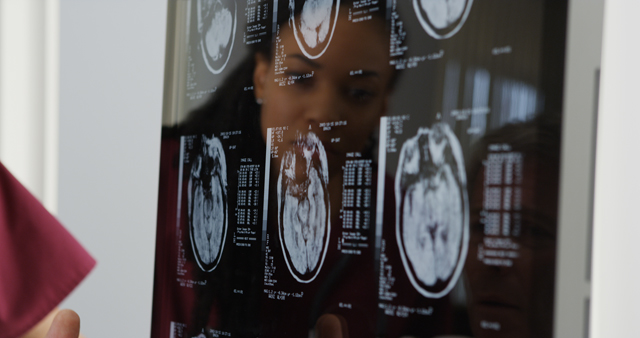What are the different parts of our brain? The human brain is one of the most complex organs in our body. It is made up of diverse parts or structures that carry-out different functions and work together using thousands of connections that connect the brain to the rest of the body. Below, we will give you a description of the brain's structure, its different parts, and how each part works.

Parts of the Brain- Brain Anatomy
Get access to exercises to assess your brain
Stimulate multiple brain areas
Help strengthen the brain structures used in the main cognitive skills. Give it a try!
Brain structure
The Central Nervous System is made up of the encephalon and the spinal cord.
- The encephalon is the central part of the CNS that is enclosed and protected by the skill.
- The spinal cord is a long, whitish cord that is located in the vertebral canal and connects the encephalon to the rest of the body. It acts as a type of information highway between the encephalon and the body, transmitting all of the information provided by the brain to the rest of the body.
Therefore, the encephalon and the brain are not the same thing. In order to be able to differentiate well between what is encephalon and what is the brain, we must know the division of the phylogenetic development of the CNS. Broadly speaking, during its development, the human brain is divided into three "brains" the Rhombencephalon, Mesencephalon, and Prosencephalon.
THE HINDBRAIN: It is the oldest and least evolved structure in vertebrates. The structure and organization of the hindbrain is the simplest. It is in charge of the regulating the basic functions we need to survive and controlling our movements. Injuries to these structures can cause serious disabilities or death. The hindbrain is located right in the upper part of the spinal cord, and it's comprised of different structures:
- The medulla oblongata: It helps control our automatic functions, like breathing, blood pressure, heart rate, digestion, etc.
- The annular protuberance or pons This is the portion of the base of the encephalon that is located between the medulla oblongata and midbrain. It connects the spinal cord and the medulla oblongata to the superior structures in the hemispheres of the cerebral cortex and/or the cerebellum. It is used in controlling the brain's automatic functions and it has an important role in the awake-state levels and consciousness and sleep regulation.
- The cerebellum: It is located below the brain and is the second largest structure in the encephalon. All of the information that is received by the body from its different sensory and motor pathways in the brain is integrated into the cerebellum, which is why its main function is controlling movement. It also helps to control posture and balance, as well as makes it possible for people to learn how to move, walk, ride a bike... Damages to this structure generally cause movement and coordination problems and issues controlling posture, as well as dysfunctions in some superior cognitive processes.
THE MIDBRAIN: It is the structure that joins the posterior and anterior brain, driving motor and sensory impulses. Its proper functioning is a pre-requisite for the conscious experience. Damages to this part of the brain are responsible for some movement problems, like tremors, stiffness, strange movements, etc.
THE FOREBRAIN: It is the most developed and evolved structure in the encephalon, and it has the most complex elevated organization. It consists of two main parts:
- Diencephalon: Located in the interior of the brain. It is made up of important structures like the thalamus and hypothalamus.
- Thalamus: It is similar to the re-transmission station of the brain: it transmits the majority of perceived sensory information (auditory, visual, and tactile), and allows them to be processed in other parts of the brain. It is also used in motor control.
- Hypothalamus: It is a gland located in the center area of the base of the brain that has a very important role in the regulation of emotions and many other corporal functions like appetite, thirst, and sleep.
- Brain Cerebrum: It is known informally as the brain, which covers all of the brain cortex (fine layer of gray matter, wrinkled in grooves and folds), the hippocampus, and the basal ganglia.

Brain anatomy and functions
In this area, we will look closer at the brain's anatomy and the functions of each structure
THE BASAL GANGLIA: A group of subcortical neuronal structures that work to start and integrate movement. They receive information from the cerebral cortex and the base of the encephalon, process it, and project it to the cortex, the medulla, and the base to allow for a coordinated movement. This group of neuronal structures works with the cerebellum to coordinate fine motor skills. It is made up of a few structures:
- Caudate nucleus, which is a "C" shaped nucleus that is implied in voluntary movement control, although it is also implied in learning and memory processes.
- Putamen
- Globus pallidus
- Amygdala, which plays an important key role in emotions, especially in fear. The amygdala helps to store and classify memories and emotions.
THE HIPPOCAMPUS: A small subcortical seahorse shaped structure that plays a very important role in the formation of memory, both in classification and long-term memory.
THE CEREBRAL CORTEX: A thin layer of gray matter that grooves around itself, forming a type of protuberance, called convolutions, that give the characteristic wrinkled look to the brain. The convolutions are delimited by grooves or cerebral sulcus and those that are especially are deep are called fissures. The cortex is divided into two hemispheres, right and left, and they are separated by the interhemispheric fissure and joined by a structure called the corpus callosum which allows transmission between the two. Each hemisphere controls a side of the body, but this control is inversed: the left hemisphere controls the right side, and the right hemisphere controls the left side. This phenomenon is called brain lateralization.
EACH HEMISPHERE IS DIVIDED INTO 4 LOBES: These lobes are delimited by 4 cerebral sulcus (Central or Roland sulcus, lateral or Silvio sulcus, parietal-occipital sulcus, and the singular sulcus):
- Frontal lobe: The biggest lobe in the cortex. It is located in the front, right behind the forehead. It extends from the anterior to the central sulcus. It is the control center of you brain. The frontal lobe is involved in planning, reasoning, problem solving, judgement, and impulse control, as well as in the regulation of emotions, like empathy, generosity and behavior. It is linked to executive functions (Miller, 2000; Miller & Cohen, 2001).
- Temporal lobe: It is separated from the frontal and parietal lobe by the lateral sulcus and the limits of the Occipital lobe. It is used in auditory and language processing, and is also used in memory functions and managing emotions.
- Parietal lobe: It's located between the central sulcus and the parietal-occipital sulcus. This part of the brain helps to process pain and tactile sensation. It is also involved in cognition.
- Occipital lobe: It is delimited by the posterior limits of the parietal and temporal lobes. It is involved in visual sensation and processing. It process and interprets everything that we see. The Occipital lobe analyzes aspects like shape, color, and movement to interpret and make conclusions about visual images.
- Some authors talk about a fifth lobe, the limbic lobe: The limbic system is made up of various structures, among of which is the amygdala, the thalamus, the hypothalamus, the hippocampus, the corpus callosum, and a few others. The limbic system manages physiological responses to emotional stimuli. It is related to memory, attention, emotions, sexual instincts, personality, and behavior.
References
Squire, L.R. (1992) Memory and the hippocampus: a synthesis from findings with rats, monkeys and humans. Psychol Rev, 99, pp.195-231.
Miller, E. K. (2000). The prefrontal cortex and cognitive control. Nat Rev Neurosci, 1 (1), 59-65.
Miller, E. K. y Cohen, J. D. (2001). An integrative theory of prefrontal cortex function. Annu Rev Neurosci, 24, 167-202.
Kosslyn, S.M. (1994) Image and brain: the resolution of the imagery debate. Cambridge, Mass; MIT Press.


